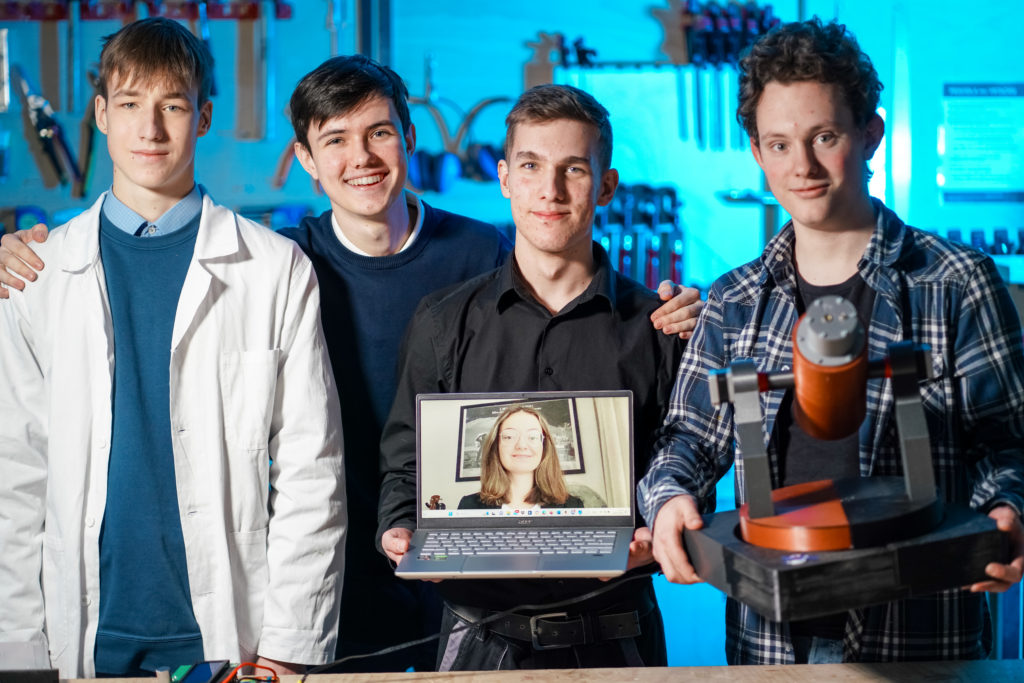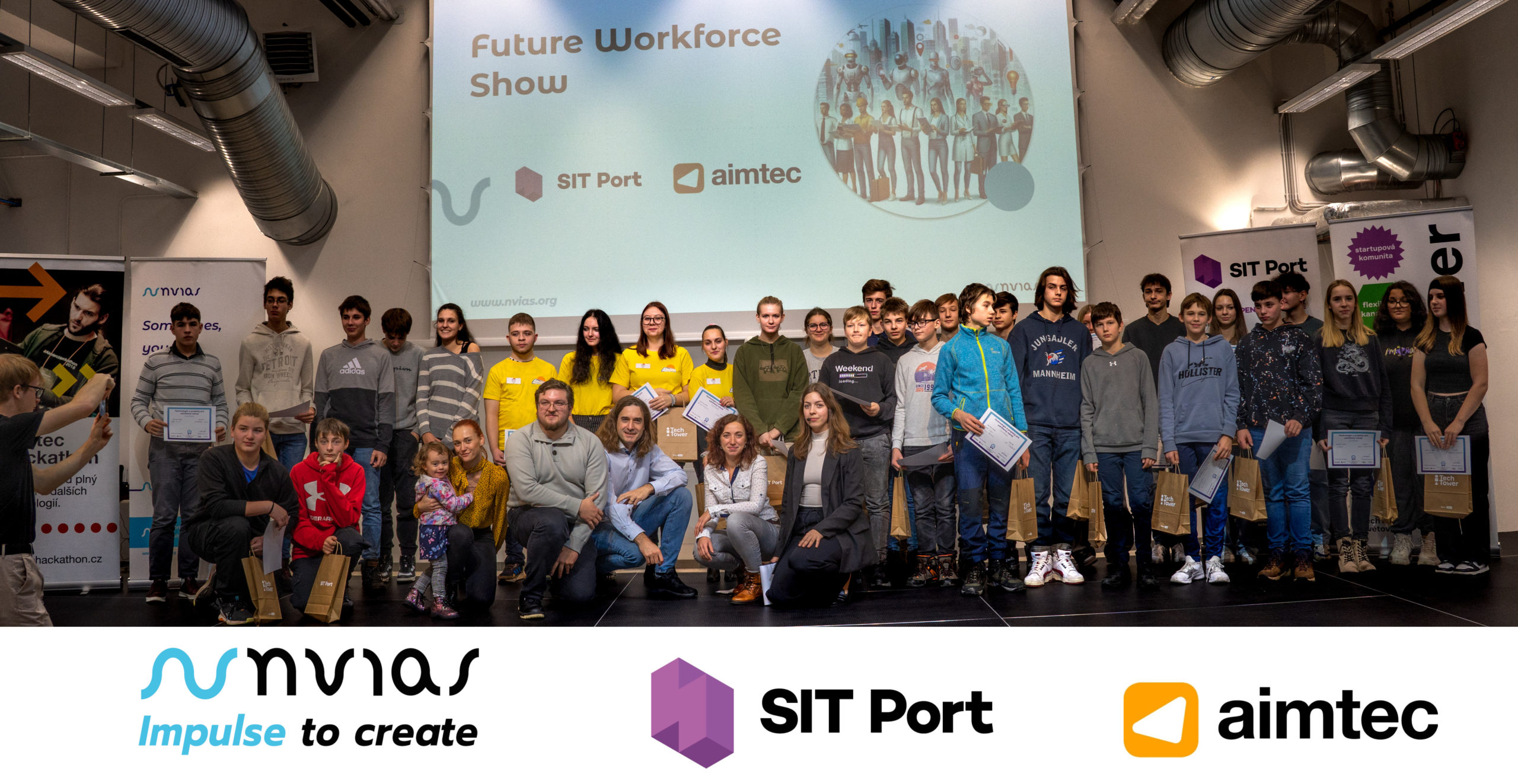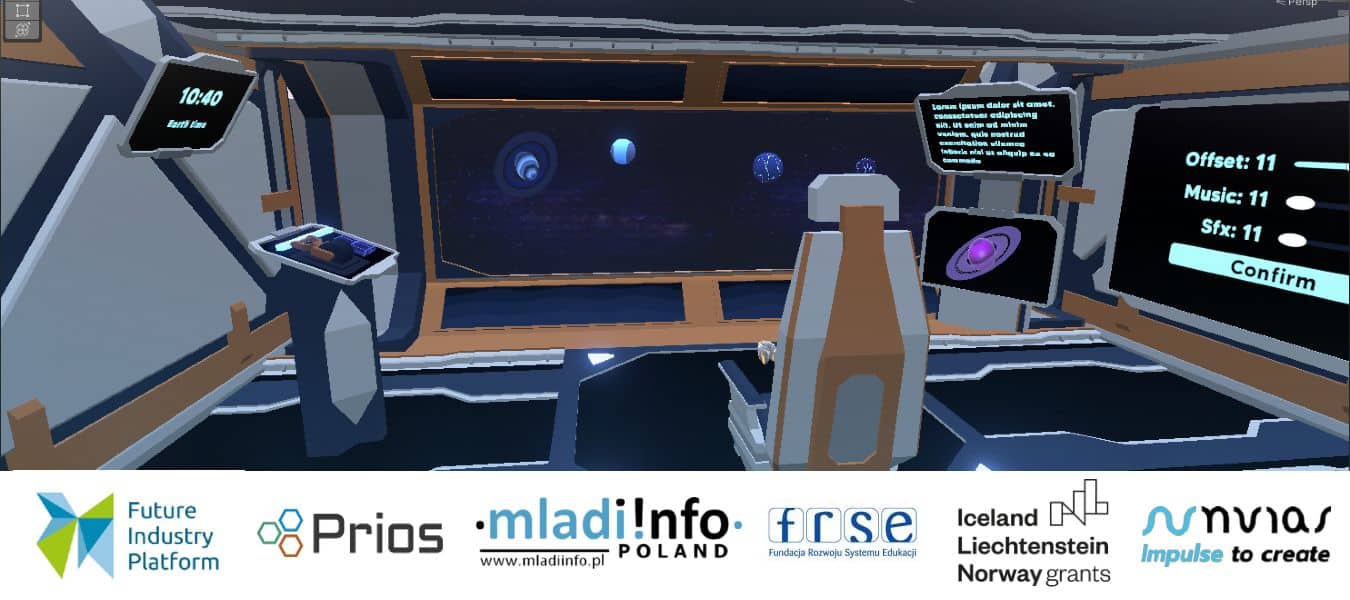Student Projects – LASAR We bring you information about the first student project developed and presented as part of Space4Talents. We are …
Impulse to create
Student Projects - LASAR

We bring you information about the first student project developed and presented as part of Space4Talents. We are proud to introduce the LASAR team:
LASAR is a system to recover non-functioning satellites using a precision laser on a robotic arm mounted on a telescope for pointing. The laser triggers a solar panel overload, battery discharge and subsequent reboot, allowing a software update to be sent. The system can be static or mobile, possibly on an airborne balloon to avoid hitting aircraft. The solution saves costs and minimises the environmental impact compared to launching new satellites.
For more information visit LASAR website.
How LASAR works
We have also received a wonderful pitch from the LASAR team:
There are a large number of non-functioning satellites in Earth orbit, which poses a significant challenge, with loss of communication with the ground station being one of the most common reasons for their software failures. Two of the Czech satellites are currently affected (Planetum 1 and BDSat 1). Our innovative solution consists in deploying a powerful and precise laser mounted on a robotic arm with a targeting system. This laser is used to focus the beam on the solar panel of the satellite, in order to induce an overload that triggers a surge protection. The solar panel is then switched off. After a period of time, depending on the capacity and age of the satellite’s battery, the battery is discharged. After the laser is deactivated, the solar panel starts charging normally again, reactivates and starts the battery recharging process. Similar to the charging of electronic devices, restarting the system is inevitable after the battery has been completely discharged. After rebooting, it will be possible to send a software update to the satellite that will give the affected satellite a new life.
Our system will be mounted on a large telescope to monitor the satellites. The arm will then lock onto the target. The attachment to the telescope must be strong but temporary, allowing for quick removal without damage. We’ll use a quick-release system combined with rubber to protect the telescope from scratches. If we purchase our own telescope, we can adapt the laser to it and permanently attach it. However, this limits the mobility of the whole device.
The laser-equipped arm can be statically fixed on the ground or designed to be mobile for operational mobility around the globe. The latter solution will help to adjust the position of the laser depending on the position of the satellites. It will also help to significantly reduce the final cost of using our solution, as it will be possible to rent the laser to companies, instead of individual companies having to purchase it. Our laser can also be mounted, for example, on a specialised air balloon that will lift it, in order to reduce the risk of aircraft (or other vehicles) hitting air corridors and also potentially impacting these objects.
To achieve this, we will develop a system that uses air traffic data to determine whether laser shining is allowed (i.e. whether there are any airborne objects above).
The copyright protection will be secured by a patent covering the laser arm schematic, with all components of the arm designed by us, while the laser itself will be sourced separately. There will be no obstacles for our clients to use our solution. The proposed solution will bring many benefits to mankind and the universe in general. It contributes significantly to sustainability in the space sector by reducing the potential accumulation of space debris that would otherwise orbit the Earth until it is burned up in the atmosphere. In addition, it contributes to cost savings. Instead of launching a new satellite, companies can choose to pay a nominal fee to reset an existing satellite, essentially bringing it back to life. This not only saves money but also minimises the environmental impact associated with the production and launch of new satellites. For example, the Falcon 9 rocket generates about 350 tonnes of CO2 per launch. In essence, our innovative approaches address key challenges in space technology, combining precision and sustainability.

Nejnovější články
The AIMTEC Partnership We are pleased to introduce a new partner – the software company AIMTEC, which will support 2 of our …
“Our Companies” with Doosan In cooperation with Doosan Škoda Power, we have modified “Our Companies” project days not only to educate pupils …
VET 4.0 is a project funded by EEA Funds from Liechtenstein, Norway and Iceland. Its main stakeholders are educational institutions, industrial enterprises and professional organisations from Poland, Norway and ...



